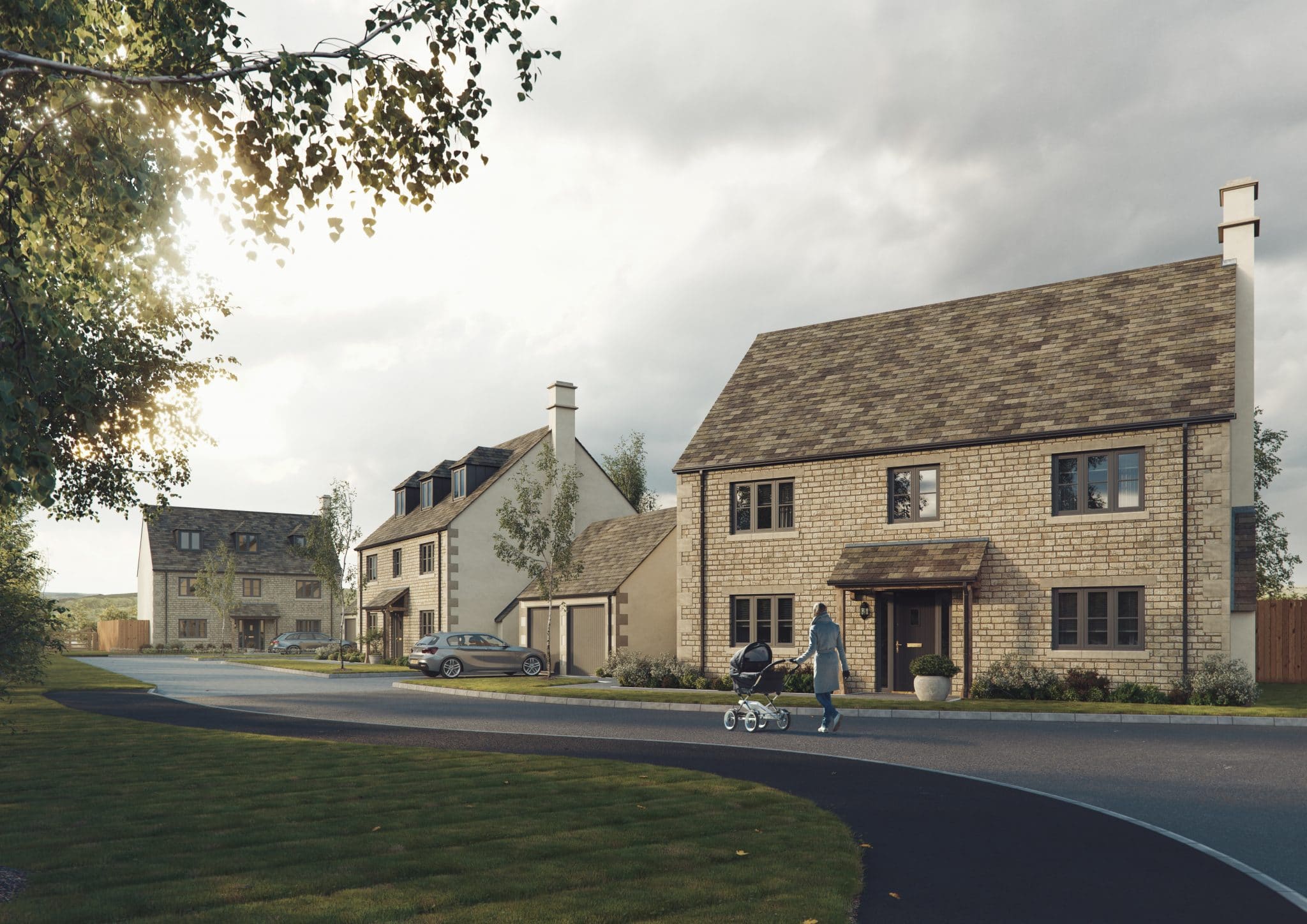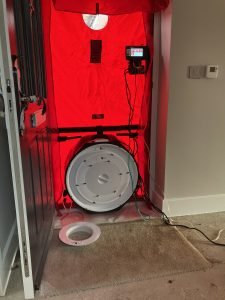Buildpass were recently invited to work with the idyllic Arms Garden – a rural development of 14 plots – on their SAP calculations, air leakage tests and energy performance certificates. Find out more in our latest case study.
Arms Garden is a beautiful development in the heart of Sutton Benger. This 14 plot site – designed and curated by the brilliant Stonewood Homes – is abundant in character, high quality finishes and traditional notes.
So, it was a real moment of pride for the Buildpass team when they approached us to support them with their sustainable construction journey.
The project.
Stonewood Homes approached Buildpass for support with:
- SAP calculations
- Optimising the building fabric, space, heating and hot water
- Air testing
- Energy performance certificates
An initial test of the first two completed units resulted in a failure as the buildings weren’t quite meeting the desired air leakage requirement. It was therefore necessary to take a deep dive into the dwellings so that we could deliver clear, actionable advice before taking the tests a second time.
The work.
In order to support the builders, we were able to run our testing equipment at near maximum air pressures to identify areas of significant leakage. We then took photographs of these areas and also walked through the unit with the assistant site manager to both show these and provide recommendations to overcome the issues.
Whilst on site, we also undertook a visual inspection of the other works in progress and made concise, impactful recommendations for improvements to the fabric construction. Our recommendations focused on first fix to ensure less filling would be required at second fix.
Our findings also led us to question the main heating system as part of our guidance. In addition – and due to our role as SAP assessors – we were able to amend the SAP to improve the air testing requirements for the properties.
Top tip: Download our guide 10 top tips for passing your SAP assessment
Following all of our recommendations and the consequent adjustments, we returned to the site a week later to reassess the dwellings – all of which then passed, meeting all necessary requirements. A job well done, we’d say!
The feedback.
But, what did they say?
“Buildpass have now provided air tests, SAPS and EPCs for 11 plots at our site Arms Farm in Sutton Benger, with another three remaining. On every plot, Graham and Andrew have been professional, personable, accommodating and flexible in response to our consistently tight deadlines and changes. They are always diligent and knowledgeable on their visits to site and willing to go the extra mile to provide documentation on a swift turnaround. It has been a pleasure working with them.”
Top tips for passing your air test first time.
After the project, we decided to pull together some of our key findings and some handy hints to pass your air test the first time.
- Ensure all penetrations into the fabric of the building are foam filled at first fix
- Pay particular attention to entry points for mains electricity and water. Useful to ensure the same for penetrations on each floor. External door frames particularly under thresholds.
- Where dry lining forms part of the wall, consider foaming between the plasterboard and floor. Particularly important in kitchens and bathrooms where no skirting is to be fitted. This should do away with the need for silicone between skirting and floor after the second fix.
- When using foam, please ensure the area to be filled is clean and dust free. To ensure a good result, consider spaying the area to be filled with water and that the hole is fully filled behind the pipe work. Also ensure the foam fully fills the area (part filling will usually render the process wasted).
- Ensure loft hatches have a satisfactory seal fitted – particularly when metal fire protection hatches are used.
- The more attention paid to detail at first fix will reduce time spent with silicone and caulk at a later date.
- Temporary sealing may be applied only to items designed to allow free air flow such as; trickle vents, air bricks, heat recovery and air conditioning systems, air extraction fans including cooker hoods, open fireplaces, vents on wood burning fires.
Usual areas with problems are:
- Under kitchen sinks
- Behind bath panels
- Taps under bathroom sinks
- Toilet waste pipe work
- Skirting boards
- Pipe work within airing/services cupboards
- Loft hatches
Read our blog: 10 top tips for improving your air leakage score




















